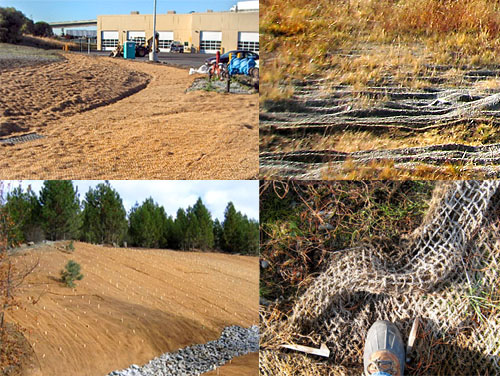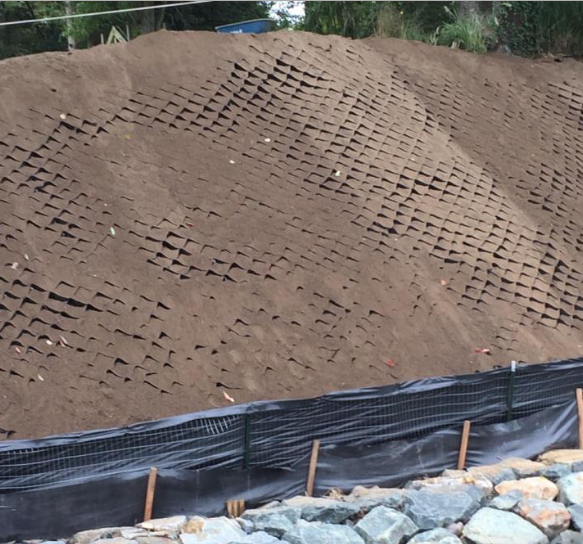Guarding Your Site with Memphis Erosion Control Solutions silt fences
Wiki Article
Ideal Practices for Erosion Control in Building Projects
Are you functioning on a building job and worried regarding erosion control? In this write-up, we will direct you with the ideal methods for preventing disintegration on your website. Memphis Erosion Control Solutions erosion control company. Get all set to deal with erosion head-on and ensure the success of your building job.5 Crucial Disintegration Control Techniques

To properly manage erosion on your building site, you'll need to execute essential methods such as slope stabilization and debris control actions. Incline stablizing is vital in protecting against soil erosion on high inclines. You can accomplish this by utilizing methods like terracing, which involves developing straight actions on the incline to reduce water circulation and promote the absorption of rainwater. An additional reliable strategy is the usage of disintegration control coverings or mats, which are positioned on the slope and help preserve soil fragments while allowing greenery to expand. Sediment control actions are likewise essential to avoid debris overflow into nearby water bodies. One efficient technique is the installment of silt fences along the boundary of the construction site. These fencings function as obstacles, catching sediment-laden water and allowing it to clear up before it reaches the water bodies. Additionally, you can make use of sediment basins, which are temporary retention ponds created to trap debris and permit water to gradually drain pipes off. Applying these vital disintegration control techniques will certainly aid reduce the negative environmental impact of your construction task and ensure compliance with laws.
Efficient Sediment and Drainage Administration

You can successfully manage debris and overflow in your building and construction job by applying appropriate erosion control actions. Another crucial practice is the execution of disintegration control coverings or floor coverings. By executing these disintegration control measures, you can efficiently handle sediment and overflow in your building and construction project, reducing the effect on the environment and conforming with regulatory demands.
Key Factors To Consider for Slope Stabilization
You need to thoroughly take a look at the incline's attributes, such as its drain, composition, and angle patterns. Look for indications of erosion, such as exposed origins, fractures, or down dirt.One more option is to grow vegetation on the incline, as the origins can assist secure the soil and control disintegration. Furthermore, setting up erosion control coverings or mats can give immediate defense while plant life ends up being established.
It's critical to consistently keep an eye on the important link supported inclines to ensure their performance. Keep an eye out for any kind of signs of activity or disintegration, and take immediate activity if necessary. Normal maintenance, such as evaluating and repairing any kind of damaged procedures, is also vital to make sure lasting stability.
Best Practices for Plant Life and Soil Security
One reliable way to secure vegetation and dirt on slopes is by consistently examining for indicators of erosion and taking immediate activity if necessary. Begin by evaluating the incline for any type of indicators of erosion, such as subjected roots, bare soil patches, or debris accumulation at the bottom. Implement disintegration control steps such as mounting erosion control coverings, mulching, or also creating maintaining walls if required.Carrying Out Proper Drain Solutions
When it comes to managing water flow and stopping disintegration, comprehending these aspects is necessary. Steeper inclines can lead to quicker water flow, increasing the risk of disintegration and flooding. On the various other hand, gentler slopes permit water to flow a lot more slowly, decreasing erosion possibility.Soil kind additionally affects drain system design. Different soil types have differing degrees of permeability, affecting just how water is taken in and drained pipes. For circumstances, sandy dirts tend to drain faster because of their rugged appearance, while clay dirts have a slower drainage rate as a result of their portable nature. Comprehending landscape design the dirt kind aids in choosing proper drainage methods, such as utilizing absorptive materials or setting up French drains. Additionally, a & j landscaping thinking about the dirt features assists avoid waterlogging, which can lead to inadequate plant development and damages to frameworks.
Final Thought
To conclude, when it pertains to disintegration control in building projects, you have to adhere to these best practices. Execute reliable debris and drainage management strategies to stop pollution. Consider slope stablizing methods to make certain the security of the site. Secure vegetation and soil by utilizing appropriate procedures. Last but not least, develop appropriate drainage systems to take care of water flow. By adhering to these crucial practices, you can properly manage disintegration and ensure the success of your building and construction job.To successfully manage erosion on your building and construction site, you'll require to execute important techniques such as slope stabilization and debris control actions. Slope stabilization is important in stopping soil erosion on high slopes. An additional effective strategy is the use of erosion control coverings or floor coverings, which are positioned on the slope and assistance preserve soil particles while enabling vegetation to grow. Another alternative is to plant plants on the incline, as the origins can aid secure the soil and control erosion. Implement disintegration control steps such as mounting erosion control coverings, mulching, or also creating retaining walls if required.
Report this wiki page